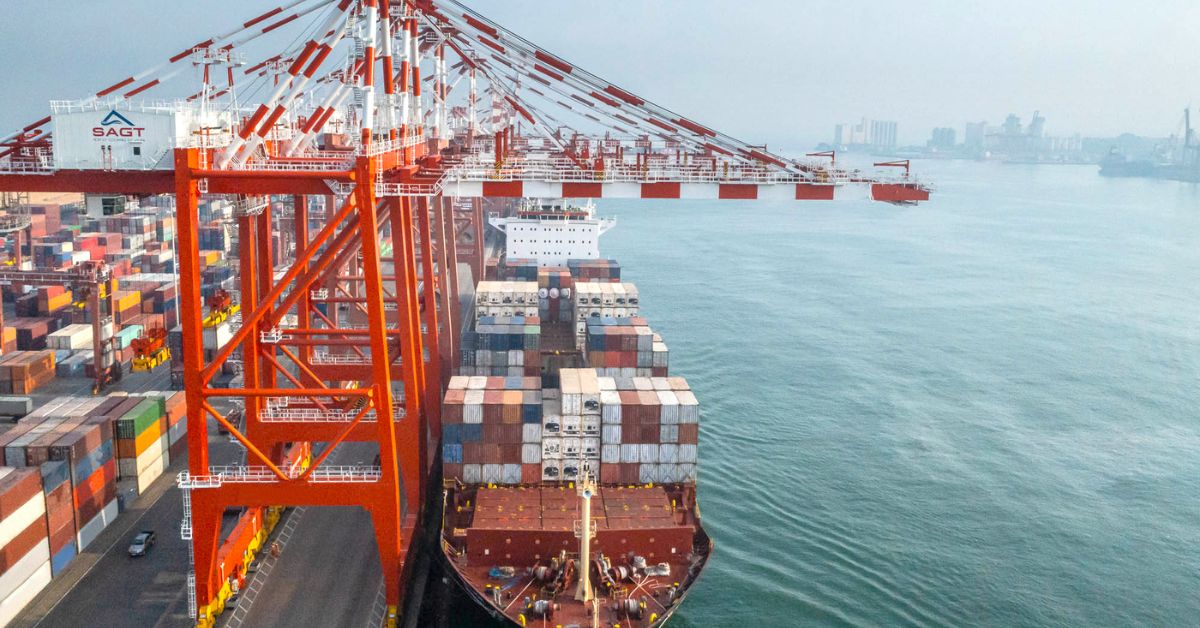Ports and terminals are pivotal in connecting global economies and facilitating the movement of goods across oceans. South Asia Gateway Terminals (Pvt) Ltd (SAGT), celebrating its 25th year in operations this year, is leading the charge in the Port of Colombo and the region in decarbonization and sustainable operations. SAGT holds the distinction of being the largest private sector investment in Sri Lanka at the time, and the nation’s first public-private partnership container terminal.
Aligning itself with the International Maritime Organisation’s (IMO) 2050 net zero target from International Shipping, SAGT is currently carrying out numerous strategic decarbonization and electrification initiatives within the organization and is committed to exploring other initiatives through collaborations with its stakeholders. Currently having a fleet of 31 Rubber Tyred Gantry (RTG) cranes out of which 22 are hybridized, SAGT plans on hybridizing six more RTG’s, with the aim to drive down the Company’s scope 1 carbon footprint. SAGT’s hybridisation project resulted in a saving over 50% diesel consumption per move of an RTG in 2022/23 in comparison to the previous year. This translated to preventing over 3900MT of CO2eq emissions from the environment. SAGT is currently exploring the feasibility of introducing a hydrogen fuel cell instead of the smaller diesel engine which would potentially make the RTG a zero-emission machine. Plans are also underway to electrify 30 Prime Movers from SAGT’s fleet, further reducing fossil fuel consumption.
A feasibility study with Greenstat was underwritten by SAGT, exploring opportunities on the electrification and integration of green hydrogen technology within the Port of Colombo, further reiterating its strategic focus on sustainability and environmental stewardship.
SAGT is currently exploring fitting solar panels with a capacity of 461.6kW on the roof of its office building, which would generate approximately 7% of the annual power requirement from the Company’s yard and building areas. The retrofitting of an existing diesel-powered forklift to electric too is being considered by the Company.
In its efforts to reduce its freshwater withdrawal for operations, SAGT is in the process of upgrading its Effluent Treatment Plant, with a capacity of generating 60 cubic meters of water per day, approximately translating to about 30% of the Company’s daily usage. This treated effluent will be used for selected activities such as flushing and machine-washing. SAGT has also partnered with a leading shipping line to carry out a pilot project to reuse water desalinated on board vessels, in the terminal for selected activities.
SAGT is invested in promoting ocean health and prevention of marine pollution. As such the Company holds membership with the World Ocean Council, an organisation dedicated to corporate ocean responsibility. The Company also partners with the Marine Environment Protection Authority (MEPA) to conduct beach clean-ups on an annual basis. Through these initiatives SAGT strives to foster environmentally conscious behaviour and practices within the broader community.
In-keeping with its commitment to contribute towards the IMO’s goal of net zero by 2050, SAGT hopes to bring its decarbonisation initiatives to fruition whilst progressively working towards realizing its sustainability targets and goals. A sustainability influencer within the industry, SAGT will continue to strive to embed best practices within its value chain and collaborate with its partners to realize a shared goal that would redefine the maritime industry.








